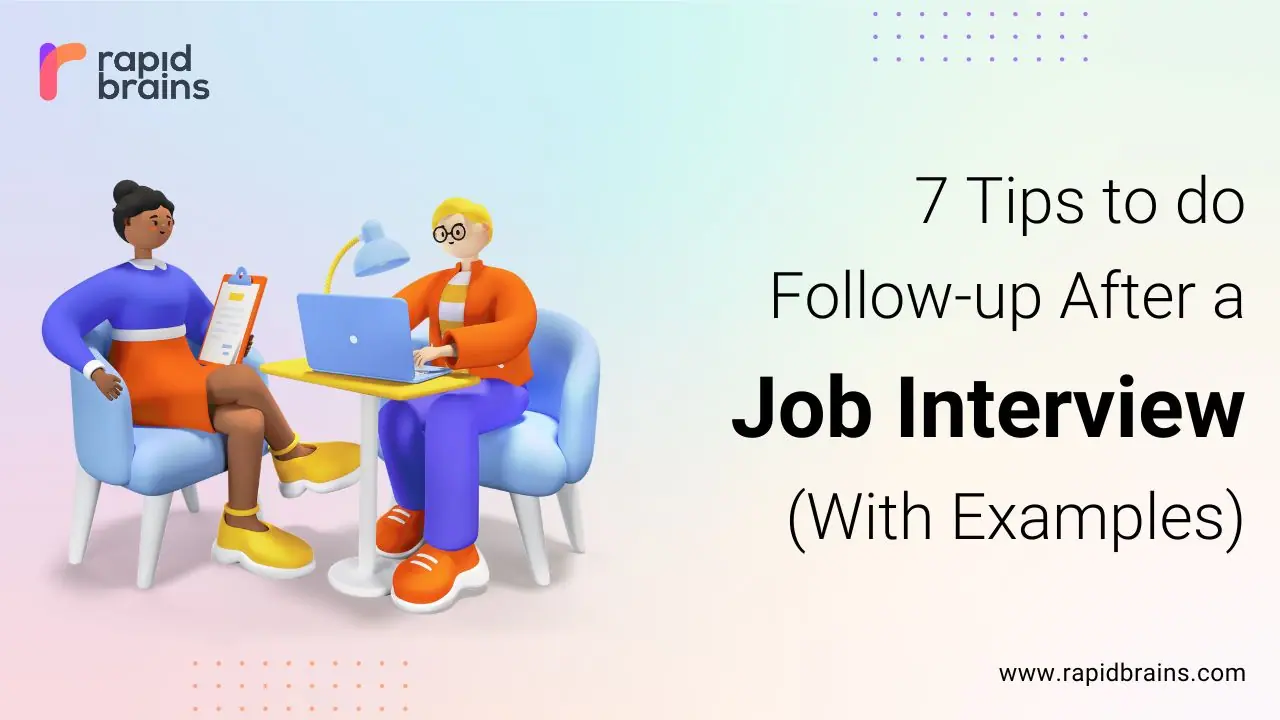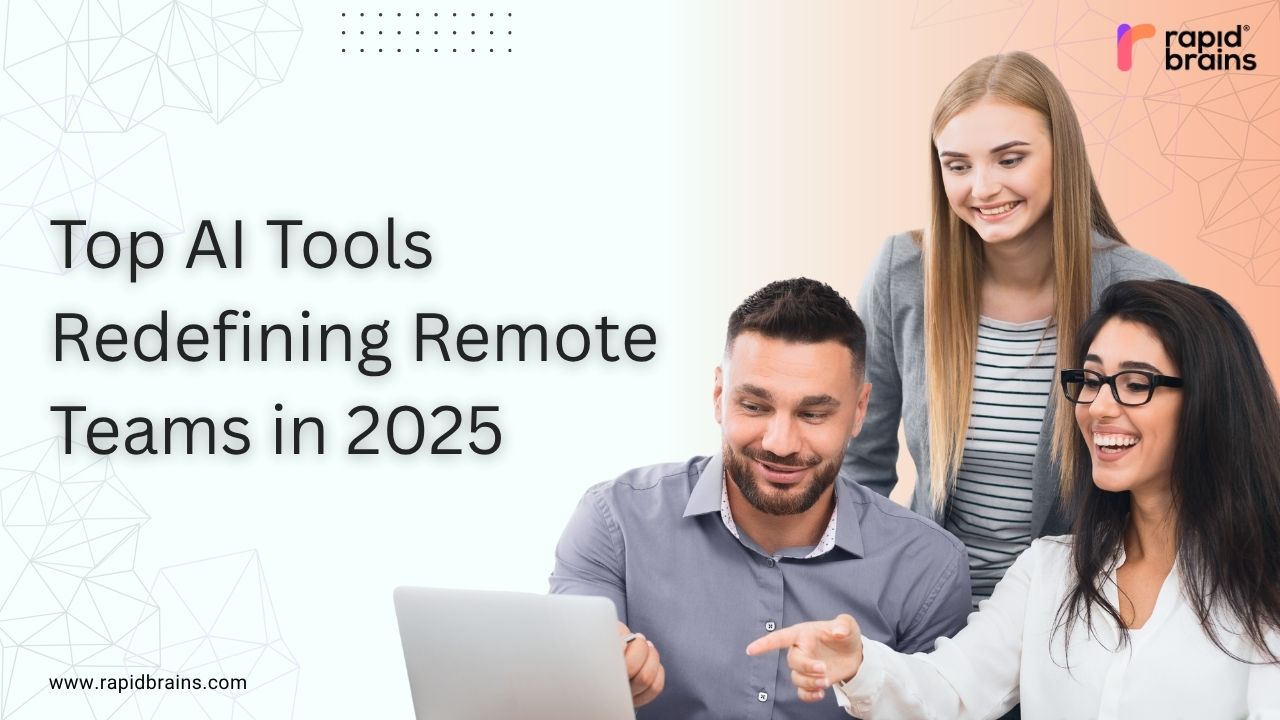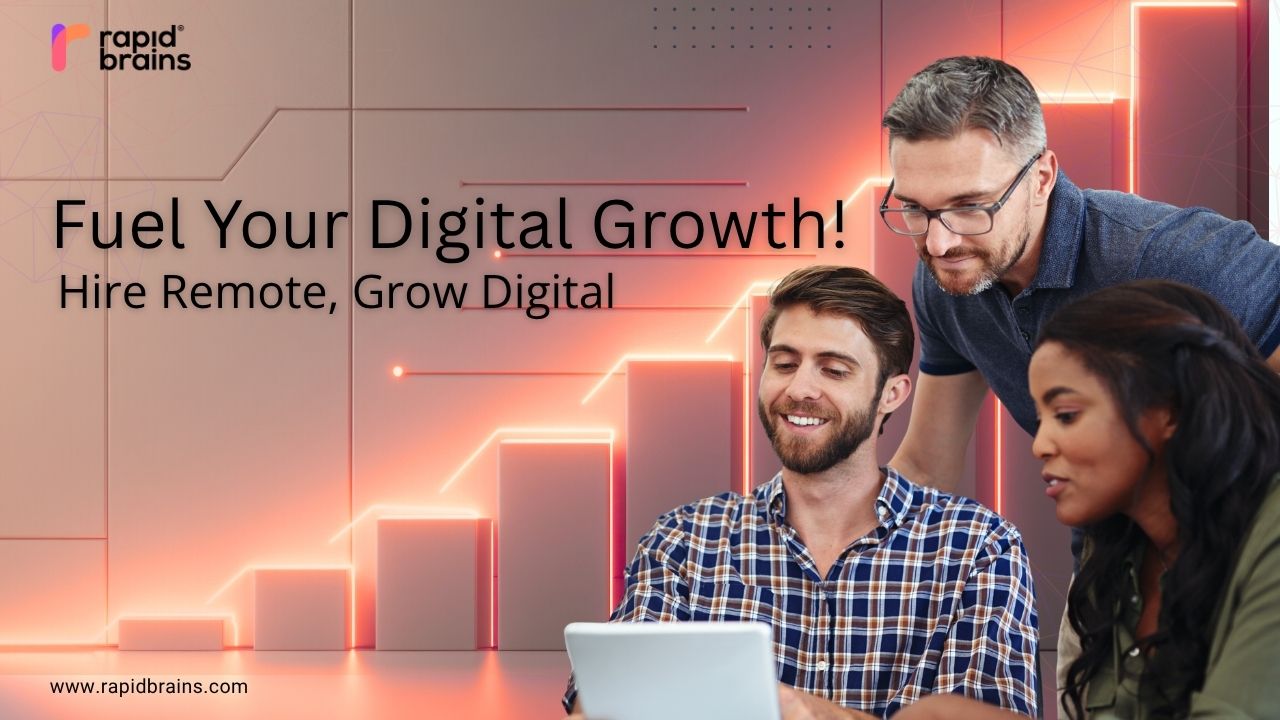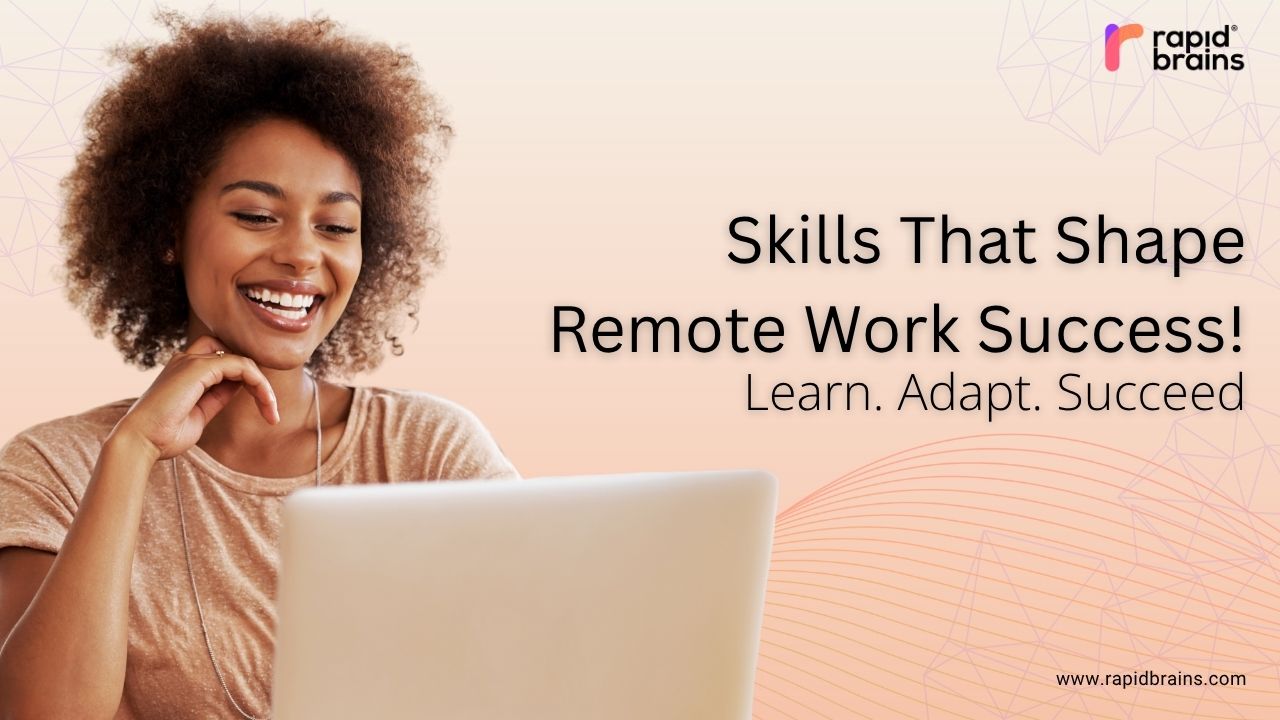
Job interview follow-up is a crucial part of the job application process, according to Rapid Brains. It shows the employer that you are still interested in the position and that you are committed to securing the job.
According to a survey conducted by Accountemps, 80% of hiring managers said that receiving a thank-you or follow-up note after an interview increased the applicant’s chances of getting the job.
Another survey by CareerBuilder found that 22% of employers are less likely to hire a candidate if they don’t send a thank-you note or follow up after an interview. Therefore, following up after a job interview is an important step toward securing a job offer.
Some Benefits of a well-executed follow-up strategy include:
- Increase in the applicant’s chances of getting the job:
A follow-up strategy can significantly increase a candidate’s chances of getting the job. It shows the employer that the candidate is genuinely interested in the position and committed to securing the job.
- Keeping the candidate’s application at the forefront of the employer’s mind:
An interview follow-up email or phone call can help keep the candidate’s application at the forefront of the employer’s mind. It provides an opportunity for the candidate to stand out from other applicants.
- Highlighting the candidate’s qualifications and interest in the job:
A well-crafted follow up emails back-up strategy can help the candidate highlight their qualifications and interest in the job. It can also provide an opportunity to address any concerns or questions the employer may have.
- Building a relationship with the employer:
A follow-up strategy can help build a relationship with the employer. It shows the candidate’s commitment to the company and their willingness to go the extra mile.
- Improving communication:
A follow-up strategy can help improve communication between the candidate and the potential employer. It provides an opportunity to clarify any misunderstandings or address any questions or concerns.
- Gaining valuable feedback:
A follow-up strategy can also provide the candidate with valuable feedback about the interview process and their qualifications for the job. This feedback can be used to improve future interviews and job applications.
A. Send a Thank-You Email
A thank-you email is a polite and professional way to follow up after a job interview. According to a survey conducted by Accountemps, 80% of managers said that receiving a thank-you note after an interview increased the applicant’s chances of getting the job. Sending a thank-you email two business days after an interview with proper subject line also shows the employer that the candidate is appreciative of their time and is interested in the position.
When crafting a thank-you email, there are several elements that should be included.
- Firstly, the candidate should express their gratitude for the opportunity to interview for the position.
- Secondly, they should reiterate their interest in the new job, and highlight why they are a good fit for the position.
- Thirdly, they should mention something specific that was discussed during the interview, such as a project or initiative, to demonstrate that they were engaged and actively listening.
- Finally, the candidate should close the email by thanking the employer once again and expressing their willingness to answer any further questions.
Here is an example of an effective thank-you email:
Dear [Hiring Manager’s Name],
I wanted to take a moment to express my gratitude for the opportunity to interview for the [Position] role at [Company Name]. It was a pleasure to learn more about the company and discuss how my skills and experience can contribute to its growth.
I was particularly impressed by the company’s commitment to [Specific Company Value or Initiative], which aligns with many candidates my own personal and professional values. Additionally, I appreciated the chance to learn more about the exciting projects that are currently underway at the company.
I want to reiterate my strong interest in the [Position] role and assure you that I am excited about the opportunity to join the team at [Company Name]. Please do not hesitate to contact me if you have any further questions or need additional information.
Thank you once again for your time and consideration.
Sincerely,
[Your Name]
B. Personalized Follow-Up Email
A personalized follow-up email is a great way to show the interviewer that the candidate is interested in the job and invested in the company. When sending a personalized follow-up email, the candidate should address the interviewer by name and reference something specific that was discussed during the interview. This demonstrates that the candidate was actively listening during the interview and is interested in the company’s values and initiatives.
In the second follow up email back-up email, the candidate should also highlight their interest and value to the company. This can be done by mentioning any relevant experience or skills that were discussed during the interview and explaining how they would contribute to the company’s success.
Here is an example of an effective personalized follow-up email:
Dear [Interviewer’s Name],
I wanted to take a moment to thank you for taking the time to meet with me yesterday to discuss the [Position] role at [Company Name]. I was very impressed by the company’s commitment to [Specific Company Value or Initiative], which aligns with my own personal and professional values.
I wanted to follow up with a quick note to you to highlight my interest in the position and my value to the company. As we discussed during the interview, I have [Specific Skill or Experience] that I believe would be valuable in this role. I am excited about the opportunity to contribute to the company’s success and growth.
Once again, thank you for your time and consideration in previous email. I look forward to waiting to hear hearing back from you and continuing the conversation.
Best regards,
[Your Name]
By sending a personalized follow-up email, the candidate can demonstrate their interest in job opportunity and value to the company and increase their chances of being considered for the position.
C. Phone Call Follow-Up
A follow-up phone call can be an effective way to make a lasting impression on the employer and demonstrate the candidate’s interest in the job. It is also an opportunity to address any questions or concerns that may have arisen after the interview. Especially when it comes to phone interview, phone call follow up is the best way to proceed further.
When making a follow-up phone call or second interview, the candidate should first introduce themselves and remind the employer of their interview. They should then express their continued interest in the job and inquire about the status of the job hunt and hiring process. The candidate should also be prepared to answer any questions the employer may have or provide additional information to support their candidacy.
Here is an example of an effective follow-up phone call:
Hello [Employer’s Name],
My name is [Your Name], and I recently interviewed for the [Position] role at [Company Name]. I wanted to follow up with you to express my continued interest in the position and inquire about the status of the hiring process.
I am very excited about the opportunity to join the team at [Company Name], and I believe my skills and experience would be a great asset to the company. I wanted to see if there were any updates on the hiring process or if there was any additional information I could provide to support my candidacy.
Thank you for your time, and I look forward to hearing back from you soon.
By making a follow-up phone call to hiring manager, the candidate can demonstrate their enthusiasm and interest n the job and increase their chances of being considered for the position.
D. Social Media Follow-Up
A social media follow-up can be an effective way to stay connected with the interviewer and demonstrate the candidate’s interest in the company. Connecting with the interviewer on LinkedIn or Twitter can help to build a relationship and keep the candidate top of mind. Engaging with the company’s social media channels can also demonstrate the candidate’s interest in the company and its values.
When connecting with the interviewer on social media, the candidate should send a personalized message thanking them for the opportunity to interview and expressing their continued interest in the position. They can also share relevant content or engage in industry-related discussions to demonstrate their knowledge and expertise.
Here is an example of an effective social media follow-up:
Hello [Interviewer’s Name],
I wanted to take a moment to connect with you on LinkedIn and thank you for the opportunity to interview for the [Position] role at [Company Name]. It was a pleasure to learn more about the company and discuss my skills and experience with you.
I am excited about the opportunity to join the team at [Company Name] and contribute to its success. Please feel free to reach out if there is anything else I can provide to support my candidacy.
Thank you for your time.
When engaging with the company’s social media channels, the candidate can share relevant content or comment on company updates to demonstrate their interest in the company and its values. This can help to keep the candidate top of mind and increase their chances of being considered for the position.
By using social media as a follow-up strategy, the candidate can demonstrate their interest and engagement with the job seekers and company and increase their chances of being considered for the position.
E. Referral Follow-Up
A referral follow-up can be an effective way to leverage the interviewer’s network and increase the candidate’s chances of being hired. After the interview, the candidate can ask the interviewer if they know of any other opportunities or contacts that may be a good fit for their skills and experience. If the interviewer provides a referral, the candidate should follow up with the referred contact in a professional and courteous manner.
When asking for a referral, the candidate should be clear about what type of job title or of position they are looking for and how their skills and experience align with the company’s values and initiatives. They should also express their gratitude for any help or advice that the interviewer can provide in hiring decision.
Here is an example of an effective referral follow-up:
Dear [Referred Contact’s Name],
My name is [Your Name], and I was referred to you by [Interviewer’s Name]. We spoke briefly about my skills and experience during the interview two weeks back, and I was hoping to connect with you to discuss any opportunities that may be a good fit.
I am very interested in [Industry or Company Name] and believe that my skills and experience would be a valuable asset to any team. I wanted to see if you had any advice or recommendations for me as I continue my job search.
Thank you for your time, and I look forward to hearing back from you soon.
By following up with the referred contact in a professional and courteous manner more interviews, the candidate can leverage the interviewer’s network and increase their chances of being hired.
G. Direct Mail Follow-Up
A direct mail follow-up can be an effective way to stand out from other candidates and demonstrate the candidate’s interest in the position. Sending a personalized letter to the interviewer can help to build a relationship and provide additional information about the candidate’s qualifications.
When sending a direct mail follow-up, the candidate should include a personalized letter addressed to the interviewer. They should express their gratitude for the opportunity to interview and highlight any key qualifications or experiences that may be relevant to the position. The letter should also include a call to action, such as a request for a follow-up call or email.
Here is an example of an effective direct mail follow-up:
Dear [Interviewer’s Name],
I wanted to take a moment to express my gratitude for the opportunity to interview for the [Position] role at [Company Name]. It was a pleasure to learn more about the company and discuss my skills and experience with you.
I am very excited about the opportunity to join the team at [Company Name] and contribute to its success. As we discussed during the interview, I have experience in [Key Qualifications or Experiences] that I believe would be a valuable asset to the company.
I wanted to thank you again for your time and consideration and express my continued interest in the position. Please feel free to reach out if there is anything else I can provide to support my candidacy.
Thank you for your time.
By sending a direct mail follow-up, the candidate can demonstrate their interest in the position and provide additional information about their qualifications. This can help to set them apart from other candidates and increase their chances of being hired.
F. LinkedIn Follow-Up
A LinkedIn follow-up can be an effective way to stay connected with the interviewer and demonstrate the candidate’s interest in the company. Connecting with the interviewer on LinkedIn can help to build a relationship and keep the candidate top of mind. Sharing industry insights and expertise can also demonstrate the candidate’s knowledge and expertise.
When connecting with the interviewer on LinkedIn, the candidate should send a personalized message thanking them for the opportunity to interview and expressing their continued interest in the position. They can also share relevant content or engage in industry-related discussions to demonstrate their knowledge and expertise.
Here is an example of an effective LinkedIn follow-up:
Hello [Interviewer’s Name],
I wanted to take a moment to connect with you on LinkedIn and thank you for the opportunity to interview for the [Position] role at [Company Name]. It was a pleasure to learn more about the company and discuss my skills and experience with you.
I am excited about the opportunity to join the team at [Company Name] and contribute to its success. Please feel free to reach out if there is anything else I can provide to support my candidacy.
As someone with experience in [Industry or Key Qualifications], I wanted to share some insights I recently came across on [Topic]. I thought it might be of interest to you and the team at [Company Name].
Thank you for your time.
When engaging on LinkedIn, the candidate should share relevant content or comment on company updates to demonstrate their interest in the company and its values. This can help to keep the candidate top of mind and increase their chances of being considered for the position.
By using LinkedIn as a follow-up strategy, the candidate can demonstrate their interest and engagement with the company and increase their chances of being considered for the position.
I. Text Message Follow-Up
A text message follow-up can be an effective way to make a personal connection with the interviewer and stand out from other candidates. Text messages are also a quick and convenient way to follow up and keep the candidate top of mind.
When sending a text message follow-up, the candidate should be concise and to the point. They should express their gratitude for the opportunity to interview and highlight any key qualifications or experiences that may be relevant to the position. The text message should be positive tone also include a call to action, such as a request for a follow-up call or email.
Here is an example of an effective text message follow-up:
Hello [Interviewer’s Name],
This is [Your Name]. Thank you for taking the time to interview me for the [Position] role at [Company Name].
I am very excited about the opportunity to join the team and contribute to its success.
If you have any further questions or would like to discuss my candidacy further, please don’t hesitate to contact me.
Thank you for your time.
By sending a text message follow-up, the candidate can make a personal connection with the interviewer and demonstrate their interest in the position. This can help to set them apart from other candidates and increase their chances of being hired. However, it is important to use this follow-up method with discretion, as some interviewers may prefer more traditional forms of communication.
J. Face-to-Face Follow-Up
A face-to-face follow-up can be an effective way to make a personal connection with the interviewer and demonstrate the candidate’s interest in the position. This can include following up in person, such as stopping by the office to drop off a handwritten note or sending a gift as a thank-you gesture. It can also include networking at industry events to build relationships and stay top of mind.
When following up in person, the candidate should be respectful of the interviewer’s time and schedule. They should make an appointment or confirm in advance if it is appropriate to stop by the same person or office. They can also bring a handwritten note or small gift as a thank-you gesture to express their gratitude for the opportunity to interview.
Here is an example of an effective face-to-face follow-up:
Hello [Interviewer’s Name],
This is [Your Name]. I wanted to take a moment to follow up with you and express my gratitude for the opportunity to interview for the [Position] role at [Company Name]. I am very interested in the position and am excited about the possibility of joining the team.
I understand that your time is valuable, so I wanted to confirm if it would be okay to stop by the office to drop off a handwritten note and small gift as a thank-you gesture. If so, please let me know what time would be most convenient for you.
Thank you for your time.
Regards,
[Candidate Name]
When networking at industry events, the candidate should be professional and respectful. They can introduce themselves and express their interest in the company or position. They can also offer to connect on LinkedIn or exchange business cards to stay in touch.
By following up in person multiple emails within one to two weeks, the candidate can make a lasting impression and demonstrate their interest and commitment to the position. This can help to set them apart from other candidates and increase their chances of being hired. However, it is important to use this follow-up method with discretion and respect for the interviewer’s time and schedule.
Conclusion
In today’s competitive job market, a well-executed follow-up strategy can be the key to landing the job of your dreams. By demonstrating your interest, professionalism, and value to the company, you can set yourself apart from other candidates and increase your chances of being hired.
Remember to tailor your own follow up email back-up strategy to the specific position and company you are applying for, and always be professional, respectful, and timely in your communication.
By incorporating these 10 ways to follow up after a job interview into your job search strategy, you can increase your chances of landing the job of your dreams and taking the next steps in your own career path to the next level.




